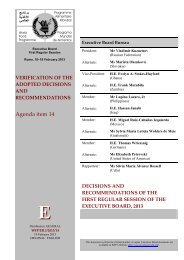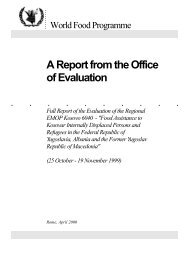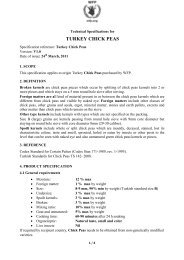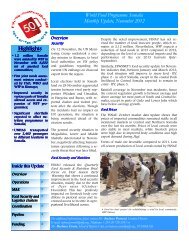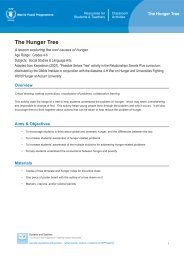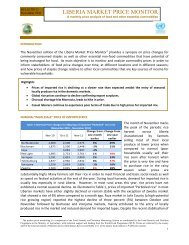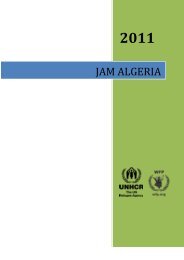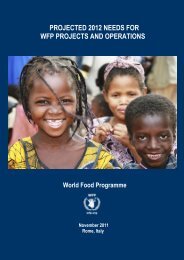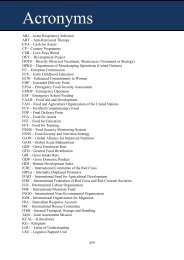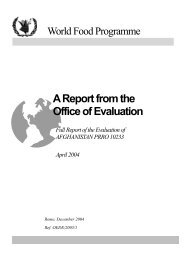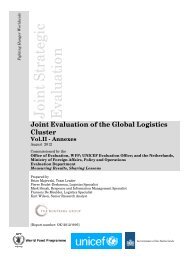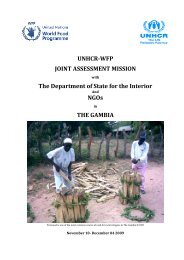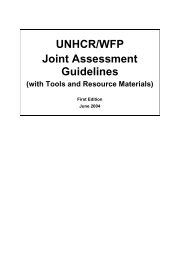The Potential for Scale and Sustainability in Weather Index Insurance
The Potential for Scale and Sustainability in Weather Index Insurance
The Potential for Scale and Sustainability in Weather Index Insurance
Create successful ePaper yourself
Turn your PDF publications into a flip-book with our unique Google optimized e-Paper software.
132<br />
CASE STUDY 7<br />
RAINFALL AND VEGETATION INDEX INSURANCE PILOTS IN THE UNITED STATES<br />
Pr<strong>in</strong>cipal stakeholders<br />
<strong>The</strong> RMA 50 designed <strong>and</strong> owns the policies, sets premium rates, <strong>and</strong> adm<strong>in</strong>isters the<br />
subsidies of premium <strong>and</strong> delivery expenses. Private <strong>in</strong>surance companies 51 sell <strong>and</strong><br />
service the policies through agents. <strong>The</strong> Federal Crop <strong>Insurance</strong> Corporation (FCIC), which<br />
is operated <strong>and</strong> managed by RMA, provides re<strong>in</strong>surance to the <strong>in</strong>surance companies.<br />
Delivery channels<br />
For market<strong>in</strong>g purposes, <strong>and</strong> to make PRF-RI <strong>and</strong> PRF-VI more accessible to producers,<br />
they were first <strong>in</strong>troduced as part of the exist<strong>in</strong>g Group Risk Plan (GRP), but have now been<br />
separated from it. 52<br />
PRF-RI <strong>and</strong> PRF-VI <strong>in</strong>surance policies are sold to producers by crop <strong>in</strong>surance agents.<br />
<strong>The</strong> vast majority of agents own their own company or work with a large multi-state crop<br />
<strong>in</strong>surance agency. Agents are generally <strong>in</strong>dependent of the <strong>in</strong>surance companies that bear<br />
the risk <strong>and</strong> that are authorized to issue policies. <strong>The</strong>se companies sell all crop <strong>in</strong>surance<br />
to farmers, not only GRP <strong>in</strong>surance. <strong>The</strong>y bid <strong>for</strong> the <strong>in</strong>surance bus<strong>in</strong>ess of agents through<br />
the commission rates they offer.<br />
<strong>The</strong> crop <strong>in</strong>surance companies receive subsidies based on the amount of <strong>in</strong>surance they<br />
sell, <strong>and</strong> they receive subsidized re<strong>in</strong>surance. Crop <strong>in</strong>surance companies rout<strong>in</strong>ely<br />
purchase private re<strong>in</strong>surance <strong>for</strong> their entire crop <strong>in</strong>surance book of bus<strong>in</strong>ess, which<br />
<strong>in</strong>cludes all <strong>in</strong>dex <strong>in</strong>surance policies.<br />
Product <strong>in</strong><strong>for</strong>mation<br />
<strong>Weather</strong> data <strong>and</strong> <strong>in</strong>frastructure<br />
<strong>The</strong> ra<strong>in</strong>fall <strong>in</strong>dex used by PRF-RI is based on weather data collected <strong>and</strong> ma<strong>in</strong>ta<strong>in</strong>ed<br />
by the National Oceanic <strong>and</strong> Atmospheric Adm<strong>in</strong>istration’s Climate Prediction Center<br />
(NOAA-CPC). 53 <strong>The</strong> ra<strong>in</strong>fall <strong>in</strong>dex reflects a spatially smoothed prediction based on a grid<br />
that reflects nearby weather station estimates.<br />
As mentioned previously, the PRF-RI crop year beg<strong>in</strong>s on 1 February <strong>and</strong> operates on<br />
a two-month <strong>in</strong>dex <strong>in</strong>terval. <strong>The</strong> PRF-VI crop year beg<strong>in</strong>s on 1 April <strong>and</strong> operates on<br />
a three-month <strong>in</strong>dex <strong>in</strong>terval, with producers choos<strong>in</strong>g at least one three-month <strong>in</strong>terval.<br />
<strong>The</strong> <strong>in</strong>tervals represent m<strong>in</strong>i-<strong>in</strong>surance periods.<br />
50 www.rma.usda.gov/.<br />
51 List of private <strong>in</strong>surance companies, www3.rma.usda.gov/tools/agents/companies/.<br />
52 Group Risk Plan <strong>in</strong>surance is a risk-management tool to <strong>in</strong>sure aga<strong>in</strong>st widespread loss of production. This plan<br />
is based on expected yield <strong>in</strong> the county, rather than on <strong>in</strong>dividual farm yield. <strong>The</strong> GRP was developed on the<br />
assumption that when an entire county’s crop yield is low, most farmers <strong>in</strong> that county will also have low yields.<br />
GRP coverage is available <strong>for</strong> many primary crops <strong>in</strong> major production areas throughout the country. Producers<br />
choose one coverage level <strong>for</strong> each crop <strong>and</strong> county comb<strong>in</strong>ation. <strong>The</strong>y then select the dollar amount of<br />
protection per acre <strong>and</strong> one of the five coverage levels (70, 75, 80, 85 or 90 per cent) of the FCIC expected<br />
county yield. Indemnities are paid when yield <strong>for</strong> the county, determ<strong>in</strong>ed by the National Agricultural Statistics<br />
Service, falls below the ‘trigger’ yield. <strong>The</strong> expected county yield is multiplied by the selected coverage level.<br />
Indemnity payments are made about six months after harvest of the crop, www.rma.usda.gov/policies/.<br />
53 www.cpc.noaa.gov/<strong>in</strong>dex.php.



